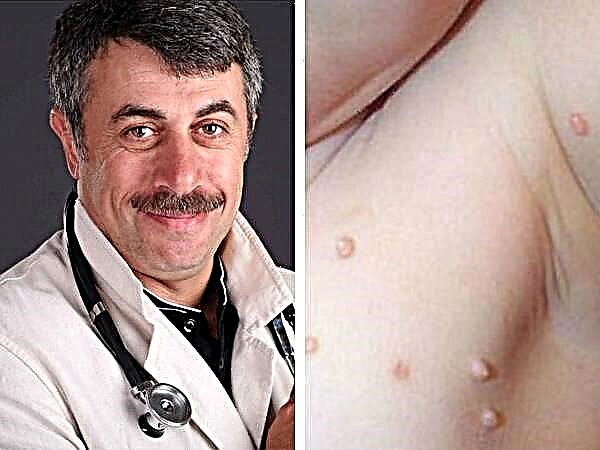Starting from the neonatal period, the skin serves as a barrier against aggressive external influences, helps to carry out metabolism and thermoregulation. Children's dermis is thinner and more easily penetrated, it is more quickly exposed to pathogens. Therefore, a frequent skin reaction is a rash with vesicles in a child of various types and localizations.
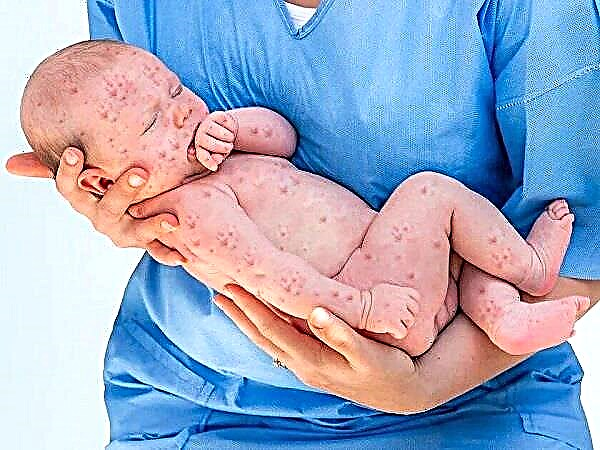
A blistering rash in a child is a fairly common problem.
Diseases accompanied by skin rashes
A rash on the baby's skin with acne with water content can accompany many diseases.
Fungal infection
Quite often, a blistering rash can appear as a result of a fungal infection. It is highly contagious and causes constant itching. Fungal spores prefer warmth and moisture, so they multiply most actively in areas of the body with such an environment. The most common fungal disease is microsporia - a rash on smooth areas of the skin from bubbles, crusts, nodules or vesicles.
Viral infection
Blistering rashes with viral lesions are accompanied by high fever, malaise, problems in the gastrointestinal tract and lymphatic system. An example of a viral infection that causes watery blisters on the skin of a child is urticaria, which is characterized by pink, itchy rashes similar to nettle burns.
Rubella occurs with a slight fever and a small red rash, which, appearing on the face, spreads throughout the body in a few days.
Viral pemphigus ("hand - foot - mouth"), also called Coxsackie, causes fever and a spotted red rash first in the mouth, then blisters appear on the hands and feet of the child, sometimes reaching the priests.
The most terrible disease accompanied by blistering rashes is measles. Small papules inside red spots appear on days 2-3 and quickly merge.
Bacterial infection
Dermatological manifestations also carry with them various bacterial infections, primarily streptococci and staphylococci, which can persist in food for a long time. A striking representative of such a disease is impetigo, in which pustular vesicles form on the child's body.
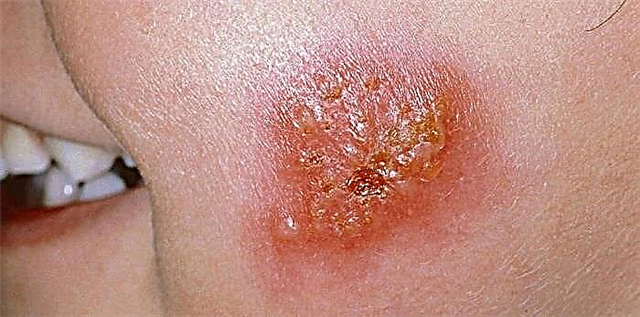
Impetigo in a baby
The disease develops after a skin injury (scratches, bites, wounds), where bubbles with a transparent liquid content appear from staphylococcus. They burst, spreading the bacteria further along the patient's body and passing to healthy people upon contact.
Allergic dermatitis
Dermatitis caused by contact with an allergen manifests itself as hives (a series of red blistering spots). In severe cases, it may be accompanied by Quincke's edema and a general worsening of the condition.
Autoimmune diseases
A number of diseases caused by a malfunction of the body's systems, when healthy cells are perceived as foreign, are autoimmune. Some of them cause blisters on the skin of a child.
A typical example is lupus, in which:
- bubbles are localized on the face, they look like a butterfly;
- the fingers and neck are covered with a rash with scales or spots;
- sunlight is very uncomfortable.
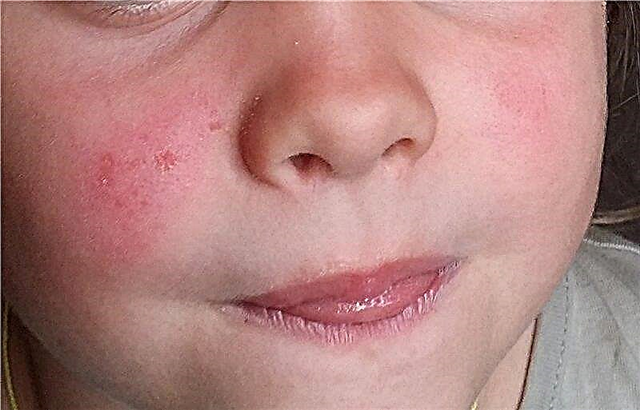
Lupus in a child
Chicken pox
The rash that appears with chickenpox (it is caused by the Varicella-Zoster virus) can be very itchy and looks like specks of red, in the center of them there is a bubble with a watery liquid. Then, in their place, crusts form - pockmarks.
Shingles
This infectious disease is caused by one of the herpes viruses and manifests itself as a one-sided blistering rash, the affected areas can be very painful. Lichen develops when the virus recurs in the body and, in addition to blisters in the child, causes low-grade fever, itching and general unwell.
Primary contact dermatitis
This is a skin reaction in the form of redness and blistering eruptions upon contact with certain plants, dyes, chemicals.
Worm infestations and parasitic pathologies
If worms are affected as a result of an allergy to their toxins, the baby may have a watery rash in the form of small itchy blisters, and nausea and vomiting may appear.
Microscopic mite is a parasite that causes scabies and blisters on the body of a child. This rash is itchy (especially at night). It is stretched out with a ruler and is highly infectious.
Another type of tick carries the dangerous Lyme disease, in which a rash forms at the site of the bite, gradually resembling an apple.
The intestinal parasite is the cause of hookworm disease, which is characterized by a raised, reddish rash, itching and drowsiness.
External influence
External mechanical action (for example, friction of hard clothes) causes the upper part of the delicate baby's skin to shift, forming a cavity where the intercellular fluid flows, resulting in a bubble.
In addition, there are other factors that cause blisters on the baby's body and face:
- frostbite or sunburn (bubbles burst after one to two days);
- contact with chemicals (accompanied by severe pain);
- insect bites or contact with stinging plants such as nettles or hogweed
- prickly heat in newborns as a result of urine exposure.
Other causes of rash
In newborns, toxic erythema occurs in the form of red spots on the skin with vesicles or pustules in the middle, as a response of the still undeveloped immune system to contact with microorganisms new to it.
In children after 8-9 years of age and older adolescents, a rash with a water-purulent filling can form as a result of hormonal imbalance. Other causes are nervous disorders, dysfunctions of the secretory organs and functional systems, and metabolic problems.
Types of rashes and localization sites
Dermatologists distinguish the following types of rashes:
- pinkish, reddish, or whitish raised spots;
- acne filled with clear liquid contents;
- blisters with pus or empty;
- small papules or bumps.
In babies, pimples are localized (depending on the cause of occurrence) on:
- legs (including feet);
- hands (including hands and interdigital spaces);
- stomach and chest;
- shoulders and back (eg, shingles);
- neck (including throat) and face;
- buttocks.
What not to do with rashes
If a child is struck by a rash with blisters, parents are highly discouraged from wiping them with alcohol, vodka or potassium permanganate. Also, you should not squeeze out such pimples, comb them, pierce them or somehow extract the infectious fluid in order to prevent infection of other parts of the skin. You can not continue to contact others, because the child may be contagious to them.
Which doctor to contact
As soon as a rash is noticed in a child, it is necessary to contact the pediatrician and give him an accurate description of the rash in order to prescribe tests, make a diagnosis and start an adequate treatment as soon as possible.
Note. The first step is to contact a pediatrician. He already prescribes additional examinations with specialized specialists: an allergist, an infectious disease specialist, a rheumatologist, a dermatologist and others.
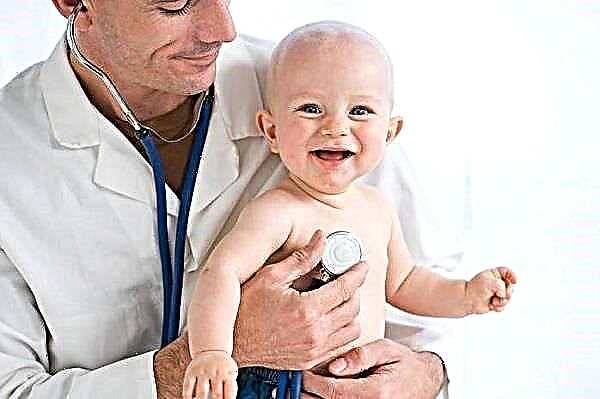
When a rash appears, the child is first shown to the pediatrician
Laboratory research
To prescribe adequate treatment, it is necessary to accurately determine the cause of the rash in the child, what is it for do a number of laboratory diagnostic tests for:
- blood biochemistry;
- blood immunoglobulin level;
- extended urine analysis;
- allergy tests;

Allergy testing
- examination of the contents of the bubbles under a microscope.
What determines the tactics of treatment
The methods by which it is supposed to treat a rash in a child depend on what is accompanied by these rashes: whether there is a temperature (then there is an inflammatory process that should be paid special attention to), general malaise, vomiting (they indicate a possible poisoning with viruses), loss weight (often with worms).
The spread of the rash with medications (antihistamines, healing agents, antiviral, antifungal drugs, sometimes even antibiotics) stops.
After consulting a doctor, folk remedies can also be used to reduce discomfort: aloe juice, plantain leaves, tinctures of medicinal plants.
Possible complications and consequences
Incorrect or untimely treatment of blisters on the body and temperature in a child can lead to dangerous consequences for his health and life. So, with allergic causes of rashes, failure to take measures can result in anaphylactic shock. In other cases, it can be suppuration of wounds, blood poisoning, scarring of the skin, exacerbation of diseases and their transition to a chronic form (lasting more than one month). If you follow the doctor's recommendations, then new acne will not appear, and old ones will disappear without consequences.
A rash in the form of bubbles is a manifestation of various diseases on the skin, which are often accompanied by reddening of the dermis, itching and a general deterioration in well-being. It is important to determine the cause in a timely manner and begin treatment.

